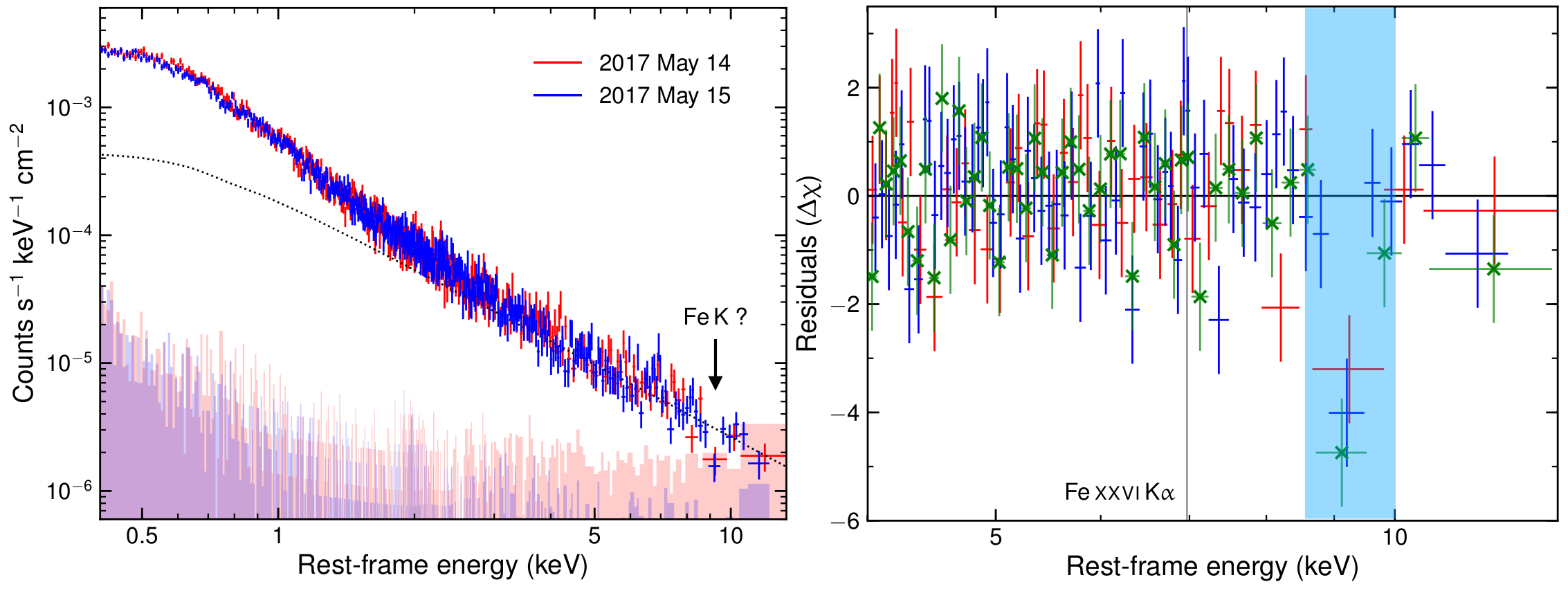CEA News, November 2018
Towards an informed quest for accretion disc winds in quasars: the intriguing case of Ton 28
A Durham astronomer, in partnership with international collaborators based in Italy and USA, has recently reported on the detection of a powerful quasar wind with an outflow velocity of 84,000 km/s (i.e. ~30% of the speed of light) using X-ray data from the XMM-Newton space telescope. To understand whether ongoing powerful X-ray winds leave any distinctive signatures imprinted at other wavelengths on the intrinsic quasar spectrum, the team developed a method (using "backwards selection") to single out a quasar in its X-ray "blow-out" evolutionary phase, which is believed to represent the initial stage of quasar feedback.

The team analysed two consecutive XMM-Newton observations (red and blue data points in the figure, green crosses represent the combined data) of the luminous blue quasar Ton 28 at redshift z=0.329, which was selected as an optimal candidate to reveal an ultra fast wind based on multi-wavelength indicators. The X-ray data for this object indeed shows a blueshifted absorption feature from highly ionized iron at the rest energy of 9.2 keV (marked in the left panel of the image), implying the presence of an accretion disc wind with a bulk outflow velocity of ~0.28 times the speed of light, and kinetic power of at least a few per cent of the total (bolometric) quasar luminosity.
Provided that the effectiveness of this selection method is confirmed with sources similar to Ton 28, this result could represent the first step towards the characterization of the fastest black-hole winds through multiwavelength indicators in the absence of high-quality X-ray spectra.
